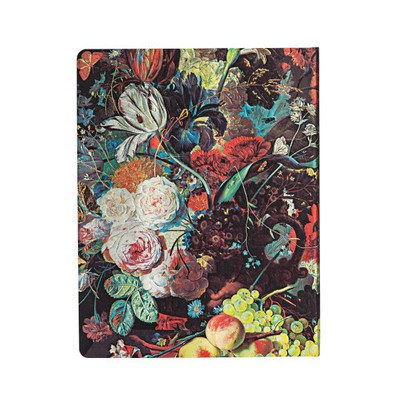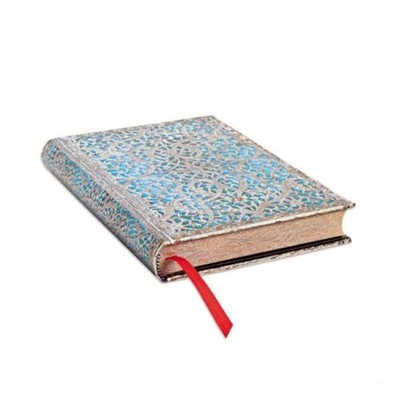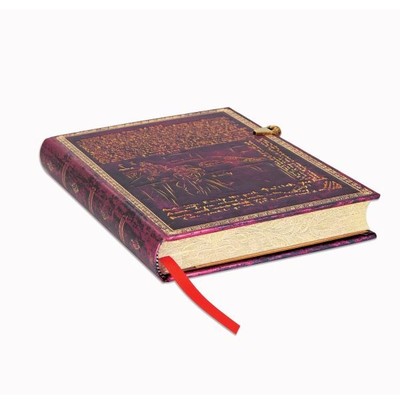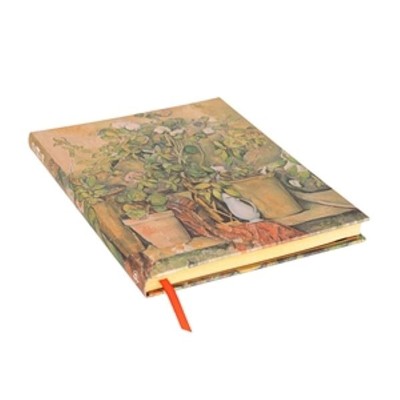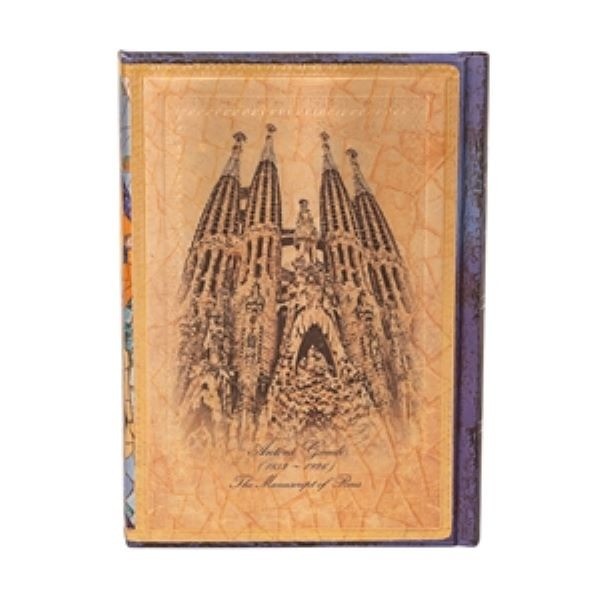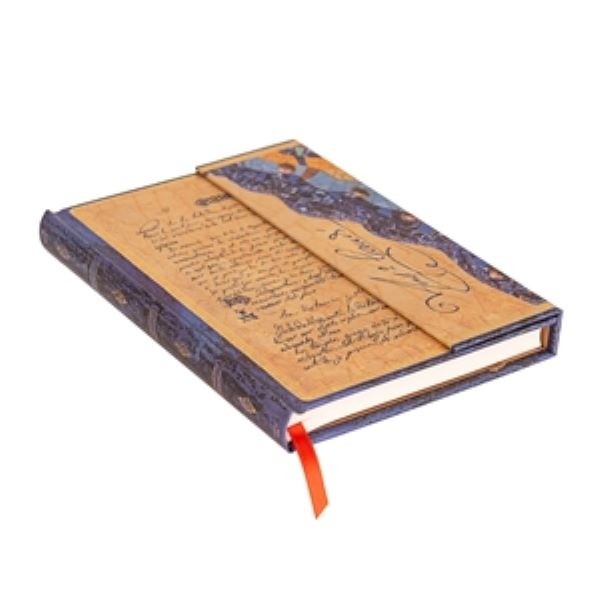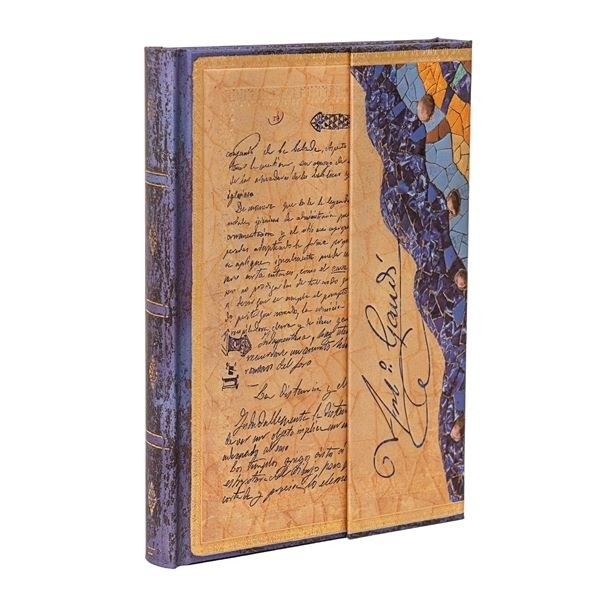About This Design - by Paperblanks
Original Art: Manuscript of Reus by Antoni Gaudí: Era: 1873–1878: Region: Spain
Antoni Gaudí (1852–1926) was a Spanish architect who was known as a leading figure in modernism and the pioneer of Catalan Art Nouveau. Gaudí’s work was greatly influenced by his passions in life: architecture, nature, and religion. His exceptional style is characterized by the depiction of organic forms, abstract lines, and extraordinary mosaics.
Gaudí rarely drew detailed plans of his works, instead preferring to create them as three-dimensional scale models and moulding the details as he conceived them. As such Gaudí left very few written documents, many of which were destroyed during the Spanish Civil War (1936–1939) following a fire set by anti-clerical groups that led to the destruction of the architect’s studio located inside the Sagrada Familia church in Barcelona. Reproduced here is the Manuscrito de Reus (Manuscript of Reus), the only remaining written document of Gaudi’s. The notebook is a kind of student diary in which he collected diverse impressions of architecture and decorating, putting forward his ideas on the subject. Included are an analysis of the Christian church and of his ancestral home, as well as a text about ornamentation and comments on the design of a desk. The manuscript is now kept at Reus Museum in his native Catalonia.
Further embellishing our cover are Gaudí’s incredible mosaics from his iconic salamander sculpture alongside an image of the Basílica de la Sagrada Familia, his architectural masterpiece.

